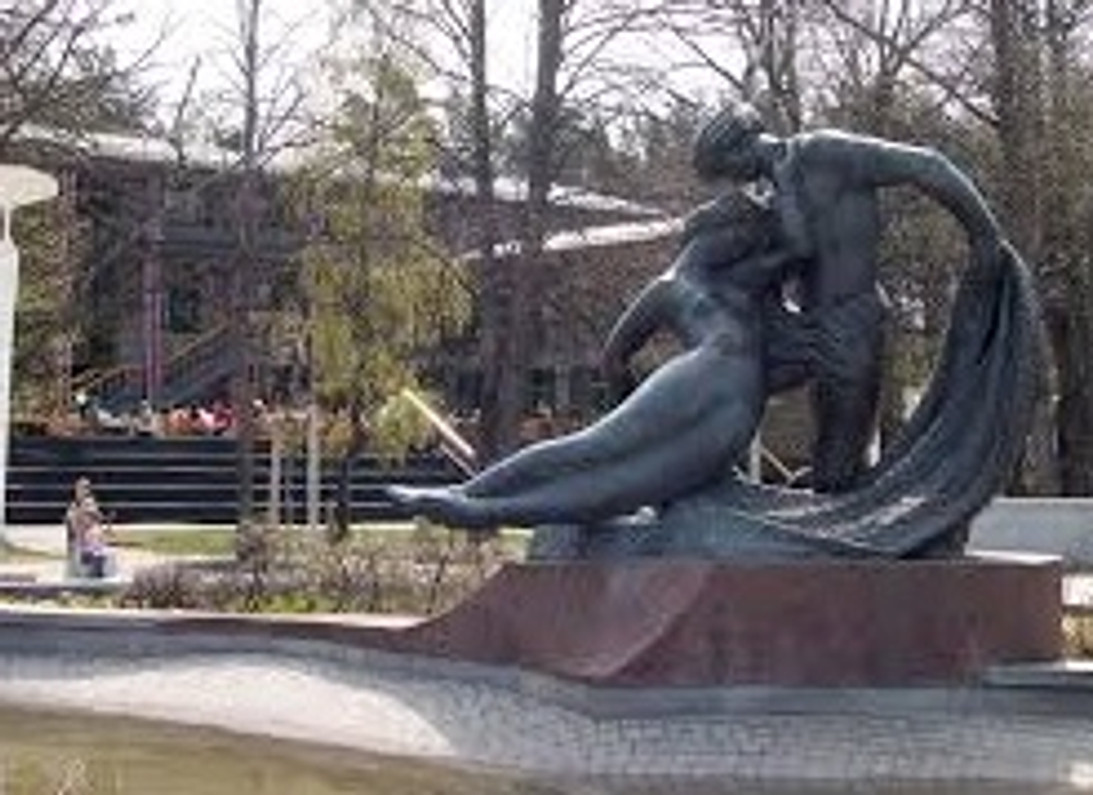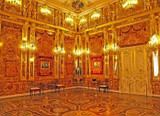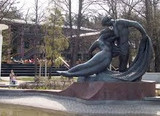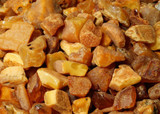Baltic Amber History and Myths.
AMBER HISTORY.
Baltic Amber was used by humankind since the beginning of time (the end of Ice Age). Some of the oldest pieces of this gemstone (cut & polished) were found from Palaeolithic Era that dates back to 40 - 10 thousand BC. It is thought that the first people found pieces of Amber washed close to Mediterranean and Baltic Sea shores.

One of the first documents mentioning Baltic Amber was written in 4th century BC by Theophrastus. His work On the Ocean was lost, but it was later cited by other the author - Pliny the Elder in his work The Natural History. Famous Greek physician Hippocrates also mentioned Amber in a few of his writings. Hippocrates attributed healing benefits to Amber that were later followed by other Middle Age doctors and scientists.
Since Amber was highly treasured by Greeks and Romans, it was even named as Northern Gold there. At the time of Middle Ages Amber had such a high demand that it was allowed to collect it only for selected people. Collection of Amber without authorization often resulted in execution (death). While Amber was trendy throughout the whole Europe, the largest number of workshops were found in Poland (Kurpie and Gdansk). They produced various jewelry pieces, mosaics, boxes and figures. Amber was popular not only in Europe, but also in other ancient civilizations. Mayas used it in healing ceremonies as an incense, Egyptians found it to be effective drying agent in mummification and Etruscans valued Amber even higher than gold.
Some historic findings suggest that trade of Amber was happening as far back as 28 thousand B.C. Since it was available only in few dispersed areas, it was necessary to transport Amber from far away distances. There was a time that one single piece of Amber was worth more than a slave in ancient Rome. Due to this it was considered as a high luxury item and it was worthy to travel long distances in order to get it. There were different trade routes established that mostly led from Baltic and North Sea to the Roman Empire, Greece, Egypt and Syria. These trade routes were referred to as The Amber Road. Quite commonly they were dangerous so tradesman experienced robberies when traveling through them. One of Romes emperors Nero wasn't too happy with high prices of Amber. He understood that the price was high due to middleman charges so he decided to contact Germanic people directly. His efforts to get closer to the source were successful and his emissaries came back with approximately 13 thousand pounds of Baltic Amber. One of this obtained pieces even weighted about 10 pounds. Some books mention that after this exhibition even stage for gladiators fights was made entirely from Amber.
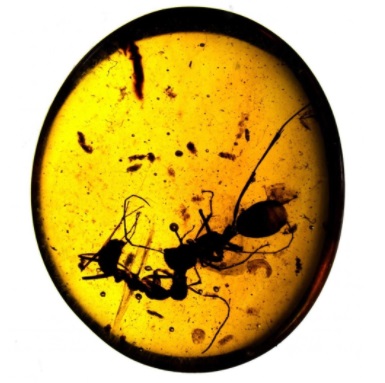
Since many pieces of Amber contain inclusions, this gemstone is very important for scientists and their work. With a help of Amber, scientists were able to identify different varieties of plants and insects that are currently extinct. Analysis of Amber inclusions helped to find at least 1000 insect species that currently doesn't exist. Amber gave perfect conditions for them to be preserved, so scientists now have the possibility to find out more about previous pants and animals. The majority of inclusions in Amber are different fleas, flies, bees, ants, spiders, grasshoppers, termites and etc. So far the most exciting finding for scientists in Amber was Theropod dinosaur feather. The main struggle so far for scientists was to extract functioning DNA from insects inside the Amber. Unfortunately the efforts were not successful yet, since DNA has a limited life.
MYTHS AND LEGENDS.
In Lithuania there was one popular legend that tried to explain the origin of Amber. This story involved a fisherman Kastytis and Jurate. Jurate was a goddess and she lived beneath the Baltic Sea in a castle made from Baltic Amber. She ruled the whole sea and all the creatures that were inside it. One day Kastytis went fishing, which greatly disturbed peaceful life of Jurate. In the beginning she wanted to punish Kastytis; however she soon realized that she fell in love with him. This was considered a forbidden love and it made Thunder God Perkunas very angry (father of Jurate). Perkunas decided to stop this love and he destroyed Jurates' Amber castle. The legend explains that after storms in this sea small pieces of Amber are being washed from this castle. Other legends also explain that Amber is Queen Jurates' tears.

Other authors tried to explain Amber origin as well. One of them was described by Roman poet Ovid in his book Poems and Writings. This story followed Phaeton who was a son of Helios. Since he was growing up only with his mother, he was commonly teased by other children due to its uncertain descent. One day Phaeton decided to prove to everyone that he was a son of the Sun God. He convinced his father Helios to allow him to drive his sun - carriage over the sky. Unfortunately he wasn't able to tame the horses properly and his ride ended in a tragedy. Since large part of the earth was on fire, Jupiter had no other choice, but to send a thunderbolt at Phaeton. He fell into the river and later drowned. His sister and mother were grieving a lot for Phaeton and they both were turned into trees. This legend explains that tears from Phaeton mother and sister were turned into Amber pieces.
Recent Posts
-
The Amber Room.
Creation of The Amber Room. The Amber Room can be considered as the most remarkable creation from …19th Jun 2018 -
Baltic Amber History and Myths.
AMBER HISTORY. Baltic Amber was used by humankind since the beginning of time (the end of Ice Age) …19th Jun 2018 -
Baltic Amber Benefits.
DOES AMBER HAVE HEALTH BENEFITS?Various health and healing properties were attributed to Baltic Ambe …22nd May 2018

